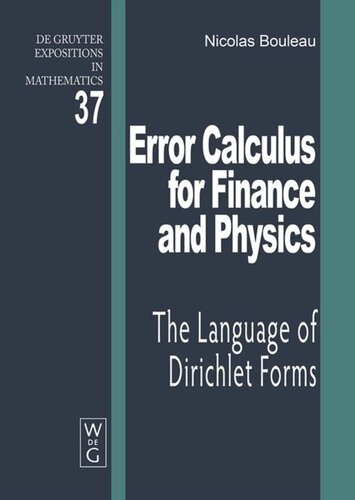

Most ebook files are in PDF format, so you can easily read them using various software such as Foxit Reader or directly on the Google Chrome browser.
Some ebook files are released by publishers in other formats such as .awz, .mobi, .epub, .fb2, etc. You may need to install specific software to read these formats on mobile/PC, such as Calibre.
Please read the tutorial at this link: https://ebookbell.com/faq
We offer FREE conversion to the popular formats you request; however, this may take some time. Therefore, right after payment, please email us, and we will try to provide the service as quickly as possible.
For some exceptional file formats or broken links (if any), please refrain from opening any disputes. Instead, email us first, and we will try to assist within a maximum of 6 hours.
EbookBell Team

4.7
56 reviewsMany recent advances in modelling within the applied sciences and engineering have focused on the increasing importance of sensitivity analyses. For a given physical, financial or environmental model, increased emphasis is now placed on assessing the consequences of changes in model outputs that result from small changes or errors in both the hypotheses and parameters. The approach proposed in this book is entirely new and features two main characteristics. Even when extremely small, errors possess biases and variances. The methods presented here are able, thanks to a specific differential calculus, to provide information about the correlation between errors in different parameters of the model, as well as information about the biases introduced by non-linearity. The approach makes use of very powerful mathematical tools (Dirichlet forms), which allow one to deal with errors in infinite dimensional spaces, such as spaces of functions or stochastic processes. The method is therefore applicable to non-elementary models along the lines of those encountered in modern physics and finance. This text has been drawn from presentations of research done over the past ten years and that is still ongoing. The work was presented in conjunction with a course taught jointly at the Universities of Paris 1 and Paris 6. The book is intended for students, researchers and engineers with good knowledge in probability theory.